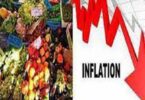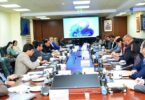Zahid Khan Shinwari
The federal budget presented by Shuakat Tarin in national assembly on Friday, 11 June is not much different from other previous budgets endured by people, then followed by many subsequent mini budgets and also the government’s deviations from the limits and targets set in the budget on revenue as well as on expenditure side.
In the current financial year the tax revenue target (Rs 5500 billion) was once reduced to Rs 5000 and then to Rs 4800 billion which even then couldn’t be achieved despite tall claims of historical revenue collection by FBR.
If we could collect only Rs.4300 billion in the current financial year then how an ambitious target of Rs 5800 billion could be achieved by collecting 24% more revenues.
The cursory glimpse on budget draft for financial year 2021/2022, clearly shows, the PTI government’s shift in policy from austerity to spending spree to push economic growth of economy.
Around 40 % increase in PSDP is phenomenal and rather unprecedented along with increase in all expenditures with various margins.
The biggest question is the huge Rs.3900 billion budget deficit (which is also based on the assumption that Rs 570 provincial surplus will be added back to make it Rs 3400 billion), then why the Tabdeeli Sarkar couldn’t work on curtailing non -development expenditures by reducing and shrinking the overinflated but inefficient size of government miniseries and departments.
When we are going to introduce the smart government concept adopted by many countries around the world. Why not negotiate and reducing defense budget? Why not rescheduling and restructuring debts with lender’s to create breathing space and present a historical surplus budget.
If we borrow Rs.4000 billion this year to bridge the gap between revenue and expenditures then how can we expect to reduce the burden of debt servicing which has reached 80 %of tax revenue (Rs.3000 billion).
Is there any other way to go out of this vicious cycle?
Next issue is restructuring and reforming FBR and taxation policy which is the main hurdle in the economic growth and investment. We appreciate the minister’s announcement that 12 no of withholding taxes will be eliminated but still the ratio of indirect taxes is very high and it is a burden on common man and poor people.
There are no incentives announced for the local or foreign investment which is essential for job creation and revenue generation but it was ignored surprisingly. Also we don’t see any policy changes to rehabilitate and revive the economy of backward areas of the country. Clearly, we have reconciled with the fact that people of Khyber Pakhtunkhwa and Balochistan will always remain backward and industries and trade activities will only be available in Punjab and Karachi.
The constitution of Pakistan ensures equal opportunity to all citizens, then why equal level playing fields are not being provided to investor’s in economically backward areas of Pakistan including KP merged tribal districts. Inflation and price hike are some other big challenges which have played havoc on the lives of common men as the current budget reflects no policy to provide any relief to them.
The state owned enterprise (SOE) are still bleeding and have become white elephants and causing losses upto Rs 700 billion per year. The need is to get rid of them and privatize it on priority basis but not being done consciously.
(The writers is a former President of SCCI)






